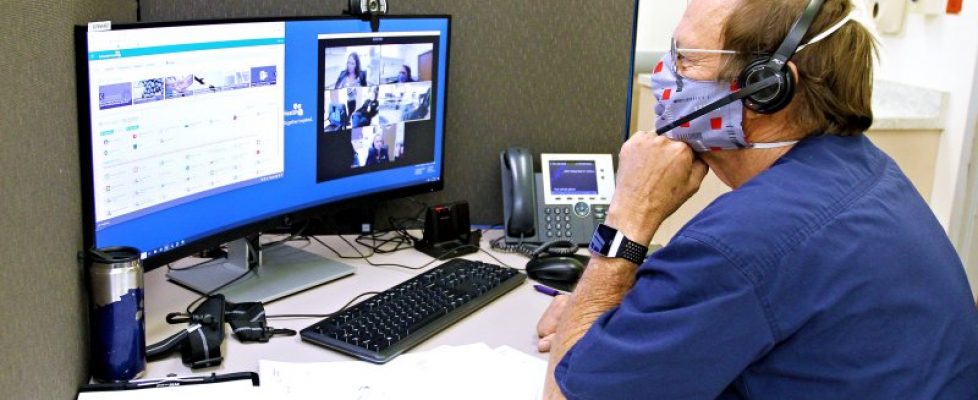CMS Permanently Expands Telehealth As Far As Congress Has Allowed
The Centers for Medicare and Medicaid (CMS) expanded Medicare reimbursement for telehealth within the annual Physician Fee Schedule (PFS) final rule for 2021. During the pandemic Public Health Emergency (PHE), CMS has temporarily reimbursed many telehealth services. In light of the success of unprecedented telehealth utilization during the PHE, more than 60 services have been formally added to the Medicare telehealth list which will endure beyond the end of the PHE.
Permanent Medicare telehealth reimbursement is limited to beneficiaries in rural areas located in a medical facility such as a nursing home. Though COVID-19 waivers temporarily removed the rural and originating site limitations, Medicare does not have statutory authority to pay for telehealth to beneficiaries outside of rural areas or to beneficiaries located in their homes (with some exceptions). With these statutory limitations, Congress effectively tied CMS’s hands to permanently expanding telehealth reimbursement in non-rural areas.
Added Services
The final rule adds the following list of services on a Category 1 basis, meaning they are reimbursable beyond the PHE:
- Group Psychotherapy (CPT code 90853)
- Psychological and Neuropsychological Testing (CPT code 96121)
- Domiciliary, Rest Home, or Custodial Care services, Established patients (CPT codes 99334-99335)
- Home Visits, Established Patient (CPT codes 99347-99348)
- Cognitive Assessment and Care Planning Services (CPT code 99483)
- Visit Complexity Inherent to Certain Office/Outpatient Evaluation and Management (E/M) (HCPCS code G2211)
- Prolonged Services (HCPCS code G2212)
CMS also finalized the Category 3 list, which includes services to be reimbursed through the calendar year in which the PHE ends. The Category 3 services include:
- Domiciliary, Rest Home, or Custodial Care services, Established patients (CPT 99336-99337)
- Home Visits, Established Patient (CPT 99349-99350)
- Emergency Department Visits, Levels 1-5 (CPT 99281-99285)
- Nursing facilities discharge day management (CPT 99315-99316)
- Psychological and Neuropsychological Testing ( CPT 96130- 96133; CPT 96136- 96139)
- Therapy Services, Physical and Occupational Therapy, All levels (CPT 97161- 97168; CPT 97110, 97112, 97116, 97535, 97750, 97755, 97760, 97761, 92521- 92524, 92507)
- Hospital discharge day management (CPT 99238- 99239)
- Inpatient Neonatal and Pediatric Critical Care, Subsequent (CPT 99469, 99472, 99476)
- Continuing Neonatal Intensive Care Services (CPT 99478- 99480)
- Critical Care Services (CPT 99291-99292)
- End-Stage Renal Disease Monthly Capitation Payment codes (CPT 90952, 90953, 90956, 90959, and 90962)
- Subsequent Observation and Observation Discharge Day Management (CPT 99217; CPT 99224- 99226)
Other services added to the Medicare telehealth list will expire at the end of the PHE.
Direct Supervision
Until the end of the PHE, providers may provide “direct supervision” using real-time, interactive audio-video technology, removing the requirement that the physician be physically present. CMS clarified that “incident-to” services may be provided via telehealth under the direct supervision of the physician through a virtual medium. Direct supervision was not approved to be delivered by phone or audio-only modalities.
Audio-Only
CMS created a new code, effective for the duration of 2021, for audio-only telephone services (HCPCS code G2252), reimbursing for 11 to 20 minutes of medical discussion with the patient to determine the necessity of an in-person visit. CMS calls this service a “communication technology-based service” (CTBS), in contrast to calling it telemedicine. With that distinction, CTBS can be delivered regardless of the patient’s geographic location but with specific billing requirements.
Nursing Care Frequency Limitations
Earlier this year, CMS waived frequency limitations for follow-up nursing facility care telehealth services. With the final rule, those frequency limitations were changed from once every 30 days to once every 14 days, permanently.
Additional Providers
CMS also expanded the list of telehealth care providers by adding licensed clinical social workers, clinical psychologists, physical therapists (PTs), occupational therapists (OTs), and speech-language pathologists (SLPs) to deliver online assessment and management services, virtual check-ins, and remote evaluation services. The final rule includes two new codes (G2250 and G2251) for the telehealth billing by these provider types.
Study
CMS has commissioned a study of the telehealth flexibilities they implemented during the COVID-19 PHE. The study will explore new opportunities for telehealth, virtual care supervision, and remote monitoring to bring efficient care to patients in facilities and at home. While studies such as these have been done in the past, CMS appears to be leveraging the data from the pandemic increase in telehealth utilization to improve policy and integrity of the program.
Payers and providers can take the cue from CMS and analyze their own pandemic data and workflows in the search of new-found efficiencies and capabilities. Many states are doing just that and their legislatures are generally open to any new telehealth data with which they can make their decisions.
Comments from the Trump Administration signal that further expansion of telehealth is on the horizon. Secretary Alex Azar stated “[W]e’ll keep exploring ways to deliver Americans access to healthcare in the setting that they and their doctor decide makes sense for them.” Despite this historic expansion, real long-term impact will require legislative intervention.

